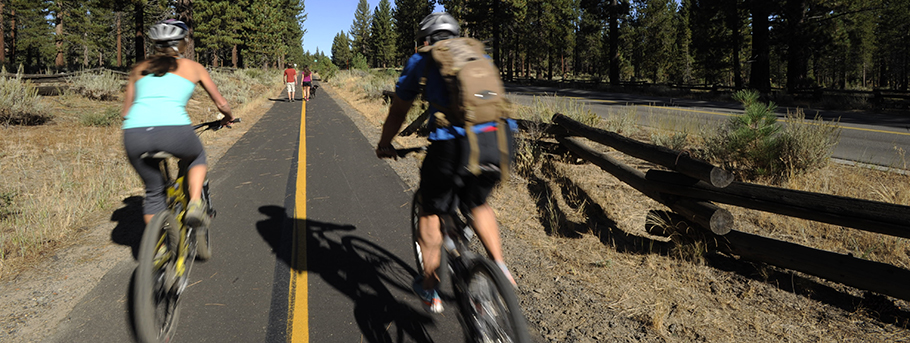By Joanne S. Marchetta
Autumn’s reflections have begun and Lake Tahoe’s forests and wildlife are preparing for the winter. While fall is generally a treasured time of year at the lake, a sense of uneasiness hangs in the crisp air as we brace for the next phase of the COVID crisis.
Summer was record breaking on many fronts. Businesses and agencies with major staff and budget shortages were suddenly required to manage the pandemic, following strict protocols. Trash overflowed on our pristine beaches and roadways. Follow that with more than 8,300 wildfires and 4 million acres burned in California alone.
Like many of you, the Tahoe Regional Planning Agency (TRPA) is trying to make sense of the year and to prepare for a future that has altered our course. Climate change impacts, increased visitation and recreation pressures, and growing populations both inside and outside the region are no longer problems of the future. There are here today. The Lake Tahoe Regional Plan is TRPA’s blueprint for sustainability and transportation is a central ingredient in the vision for a healthy Lake Tahoe and improved quality of life for our communities.
TRPA is in the midst of updating the Regional Transportation Plan. The plan focuses on transit, trails, and technology to relieve traffic congestion, better manage parking, and reduce local greenhouse gas emissions to meet or exceed the targets of California and Nevada. The draft plan curbs growth of vehicle miles traveled and reduces mobile-source greenhouse gas levels by 12.4 percent from 2005 levels—well over the 5 percent target set by California.
 The plan calls for expanded transit services and a robust network of trails, sidewalks, and bike lanes. TRPA believes every Tahoe resident should have safe, reliable, and convenient ways to get around without having to drive. We also need to make it easier for visitors to leave their cars parked while exploring. We can do this by increasing transit availability, expanding bike paths, and implementing parking management strategies such as reservation systems. In all areas, the draft plan emphasizes the use of technology and data to improve how roads, traffic signals, and parking areas are operated and to put real-time information about congestion and the most convenient travel options at everyone’s fingertips.
The plan calls for expanded transit services and a robust network of trails, sidewalks, and bike lanes. TRPA believes every Tahoe resident should have safe, reliable, and convenient ways to get around without having to drive. We also need to make it easier for visitors to leave their cars parked while exploring. We can do this by increasing transit availability, expanding bike paths, and implementing parking management strategies such as reservation systems. In all areas, the draft plan emphasizes the use of technology and data to improve how roads, traffic signals, and parking areas are operated and to put real-time information about congestion and the most convenient travel options at everyone’s fingertips.
Specific corridor plans tackle high-use areas like the Placer County Resort Triangle, State Route 89 around Emerald Bay, and the Mainstreet Management Plan for the Highway 50 realignment on the south shore. The goal of the Emerald Bay corridor plan is to eliminate as many as 37,500 cars in that area per peak summer month. The recreation pressure Tahoe witnessed this summer may be a harbinger of visitation to come. We need these benefits now to protect Lake Tahoe’s air and water quality and to enhance our communities.
Tahoe and Truckee are one of several so-called “zoom towns” to spring up across the U.S. as the transition to remote work encourages some to relocate to beach and mountain towns that previously supported a limited number of jobs. It may take a year or two to know how this migration plays out in our region, but whatever changes come, transportation investments are needed so we can meet the needs of a changing population. Our Regional Transportation Plan is being considered for adoption by the TRPA Governing Board later this year. For more information on the plan, visit trpa.gov/rtp.
Solving transportation issues at Tahoe is one way we can start to make sense of this year. Maybe the fresh fall air, finally free from wildfire smoke, can bring us clarity. And maybe while nature is making its magical turns, we can turn this year’s lessons into solutions that will benefit us all.
Joanne S. Marchetta is the Executive Director of the Tahoe Regional Planning Agency
